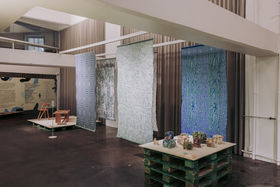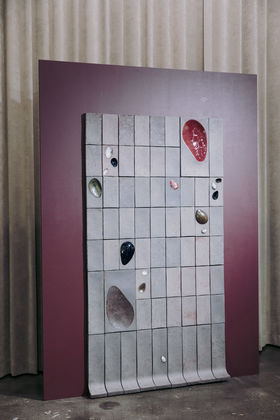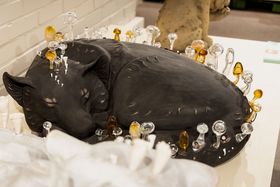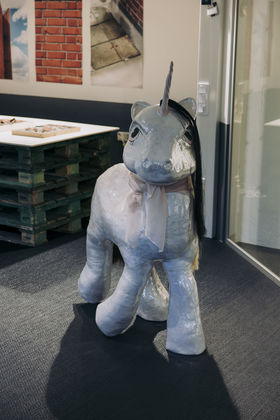The Making of ARTEFAKTI

The Contemporary Design Programme (CoDe) at Aalto University is relatively young. The university itself was created just over a decade ago in 2010 when three separate institutions amalgamated, bridging expertise in design, engineering and business. After some rounds of iteration, the CoDe programme in its current form launched in 2018.

Established design Masters’ at other schools feature annual graduation showcases in which participation is as much a rite of passage as a cap and gown, but until now the nascent CoDe programme has not produced any formal group exhibition for outgoing students. While our graduates chalk up majorly impressive successes in their own right – launching award-winning startups and exhibiting at major fairs like Salone del Mobile Milano, Dutch Design Week, London Design Biennale, and Habitare — we lack a collective footprint. Our classmates are Finnish and from farther away: this first iteration of the exhibition also features talents from Mexico, Colombia, Italy, Spain, Japan, Canada, and the USA. Our goal with ARTEFAKTI is to showcase the broad-spanning creative outcomes of this programme and, more importantly, to highlight the unique stories of the individual designers emerging from the Master’s. As such, ARTEFAKTI has no overarching theme; rather, we have asked each graduate to write their own Designer Narrative, outlining their personal approach to contemporary design and tracing their path to and through their practice.
CoDe emphasises lateral collaboration and self-initiative, as seen in the open briefs of its core courses. Sometimes as little as one word or concept (“soil”, “origins”, “The Baltic Sea”) is the prism through which an expansive array of projects takes shape. In the same spirit, when we approached the CoDe faculty to propose an annual graduation exhibition, they encouraged us to take the lead and create a show from our perspective as students. With the support of Aalto University’s Department of Design, our vision is realised in this first edition of ARTEFAKTI. Anticipating the evolution of the show, we have partnered with Helsinki Design Week for the next three years, starting with this inaugural graduation show. The name ARTEFAKTI references a common thread in CoDe’s output, where students produce artefacts of different orders – be they material, digital, conceptual, collaborative, or otherwise – as an inquiry into the role of design objects in society.
Producing this exhibition series has been a labour of love: it is at once an offering to our now-graduating classmates, a contribution to incoming student cohorts who will participate in subsequent editions, a platform for connecting with industry partners who will visit us in person at Merikortteli or via our digital archive, and a salute to the incoming collaborations and colleagues we have yet to meet. More broadly, ARTEFAKTI is designed with the future of the Contemporary Design programme in mind, its reputation and reach both at home and abroad. Finland may be slightly farther than other design capitals geographically (consequently, there is an encouraging air of deliberateness from classmates who venture from abroad) but this is a place steeped in the tradition of design. As students of the Master’s Programme in Contemporary Design, we are living in a place that is historically visionary, that values cultures of craft and quality, and where our ties to nature are not simply aesthetic or theoretical but grounded in the landscapes we inhabit daily. We are looking to the future while firmly planted in the present.
Thank you for stopping by.
Zoë Robertson on behalf of the ARTEFAKTI production team (Etienne Thevenet, Juan Guevara Verjel and myself)
An interview with the Faculty of Aalto University’s MA in Contemporary Design
The ARTEFAKTI Team sits down with the faculty of Aalto University’s Master’s in Contemporary Design to discuss the origins of the programme, students’ expansive outcomes, and the common values that underscore its teachings. We also talk about how we interpret contemporary design and the way it factors into the wider field of design.

Read more news

Alum Janette Malmström: A business strategist guiding companies through change
At Monitor Deloitte, Janette excels not only in project management but also in providing valuable strategic insight to clients.
Call for applications: Aalto Creatives pre-incubator programme starts in March 2025
The application period for the Aalto Creatives pre-incubator programme is open until 10.2.2025
Aalto University’s master’s programmes spark interest worldwide
Master’s programmes attract a diverse array of applicants from across the globe, representing 127 nationalities
















